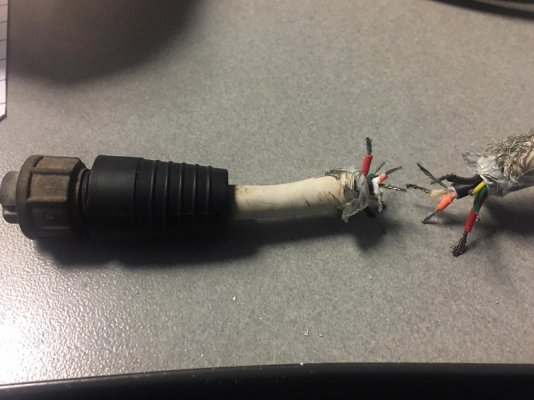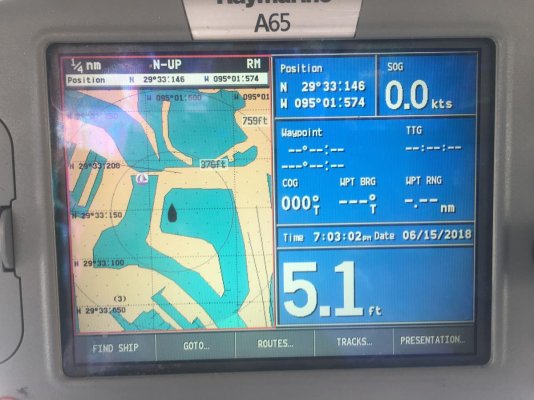toocoys
Guru
Ok electronic gurus, what am I doing wrong?
This cable is no longer made by Raymarine and someone was gracious enough to send me their's when they pulled their old electronics out. Unfortunately he had to cut the wire, and now I'm trying to put it back together.
I cannot figure out how to get the connector off in tact so that I can notate which wires go to which pins, so I'm trying to solder it back together. Except this is not regular copper wire. Its silver and the solder is not melting to it.
I have thin strand electronics solder, but do I need something special? My iron is hot enough to melt the solder but I cannot get the wire to accept it.
Any advice? Or do any of you know how to remove the connector?
This cable is no longer made by Raymarine and someone was gracious enough to send me their's when they pulled their old electronics out. Unfortunately he had to cut the wire, and now I'm trying to put it back together.
I cannot figure out how to get the connector off in tact so that I can notate which wires go to which pins, so I'm trying to solder it back together. Except this is not regular copper wire. Its silver and the solder is not melting to it.
I have thin strand electronics solder, but do I need something special? My iron is hot enough to melt the solder but I cannot get the wire to accept it.
Any advice? Or do any of you know how to remove the connector?




